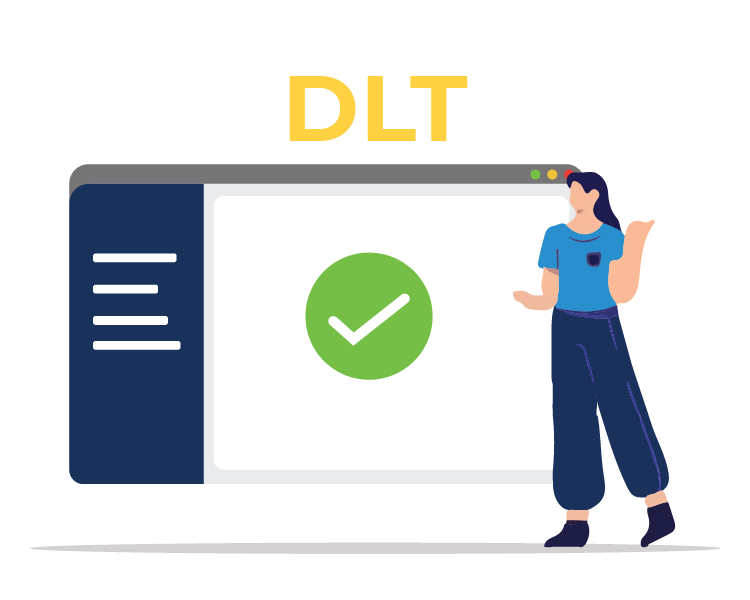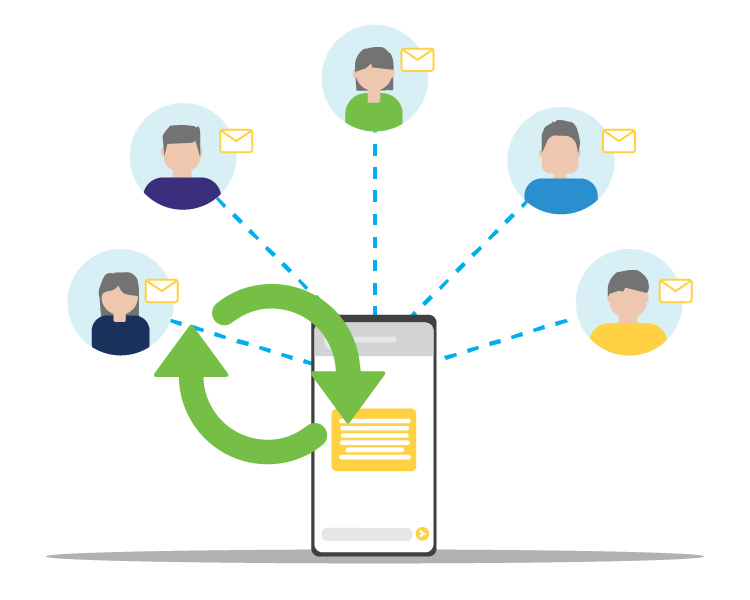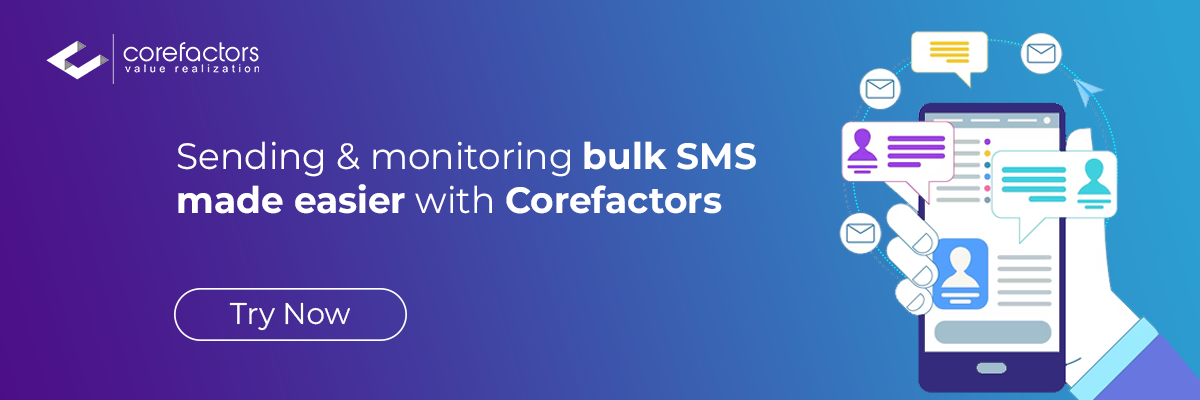Keeping your audience informed and engaged is not just a good idea; it's a necessity. Failure to do so could swiftly result in losing them to more attentive competitors.
Enter SMS, a stalwart in customer engagement. With the widespread use of mobile phones and the affordability of SMS marketing, it remains a top choice for businesses.
Yet, the very cost-effectiveness that makes SMS marketing attractive can lead some brands down the path of spam and unethical messaging.
To safeguard the authenticity of commercial communication, the Telecom Regulatory Authority of India (TRAI) has mandated DLT registration for every business before they can send messages to customers.
This blog will unravel the intricacies of DLT registration, exploring its process, significance, charges, and the myriad benefits it bestows upon both customers and businesses. Stay tuned for a deep dive into the world of secure and effective communication!
Understanding DLT Registration

Simply put, DLT Registration is the process of registering your business or legal entity, SMS Header, and SMS content template on Access Provider before initiating commercial communication with customers.
This process is enforced by the Telecom Regulatory Authority of India (TRAI) to regulate unsolicited commercial communication through the Access Provider Network. The regulation aims to bring end-to-end traceability and eliminate spam or any fraudulent communication to enhance customer experience.
As per the Telecom Commercial Communications Customer Preference Regulations, 2018, every Access Provider (including Basic Telephone Service Provider, Cellular Mobile Telephone Service Provider, Unified Access Service Provider, Universal Access Service Provider, and Virtual Network Operator) must ensure that any commercial communication using its network only take place using a registered header(s) assigned to the sender(s) for commercial communication.
The term DLT is derived from the technology used by Access Provider to manage the registration process and ensure compliance with the regulation. DLT means distributed ledger technology, a technological solution that enables a single, sequenced, standardized, and cryptographically secured record that is distributed (spread across multiple sites or institutions) and can be acted upon by varied participants based on consensus.
This technology is also used for recording the business entity details and documents, Sender ID, content template, and so on.
Why DLT Registration is Required?

TRAI mandates DLT registration to address the rising concerns related to spam and fraudulent messages. Authenticating the sender's identity and ensuring adherence to predefined rules, creates a more secure and trustworthy environment for SMS marketing. This not only enhances the overall user experience but also helps businesses build credibility with their audience.
Any individual, business, or legal entity who wants to send transactional, promotional, or service SMSs to their customers in bulk, needs to get themselves registered with any Access Provider. Bulk constitutes sending more than 20 in 24 hours or more than 100 in 7 days or more than 300 in 30 days.
DLT Registration Process
DLT registration for bulk SMS service involves following sequential steps.
- Getting Principal Entity Registered
- Getting SMS Header Registered or getting Sender ID
- Getting approval on the Consent Template
- Getting approval on the Content Template
You can do the above registrations on any Access Provider/ telecom operator like Jio, BSNL, Airtel, VodafoneIdea, and so on.
Getting Principal Entity Registered
Principal Entity here refers to the legal entity, business, or individual that wants to send SMS.
If you are a commercial business (individual or company) dealing with products or services and would like to communicate with your customers through SMS or voice, then you need to register as an Enterprise or Principal Entity
If you are a Telemarketer, an individual, or a company that collects SMS or voice traffic from other businesses and has a direct connection with telecom operators, then you need to register as a Telemarketer
Follow these steps to register as an Entity on the DLT platform:
- Go to any telecom service provider's DLT portal and select the Register option.
- Choose either a Principal Entity or a Telemarketer, depending on your needs.
- Complete the form with all relevant information about your company, including the authorized contact person, upload your company's KYC documents, and press submit.
- Complete OTP verification to successfully submit the Entity Registration request
It generally takes 2-3 days for approval. However, on successful submission, you would receive a confirmation mail instantly from the telecom operator stating that the Entity registration request has been received.
Once your entity gets approved, the telecom operator will update you by mail and will also share your login details for the DLT panel and Entity Number. In general, the telecom operator charges you around INR 5000/- + GST for a year for the DLT panel.
You do not need to register your business again once it has already been registered on the DLT portal of any telecom operator.
Getting SMS Header Registered
Before proceeding on how to get the SMS Header registered, let’s first understand the headers and their type.
A Header is a unique ID assigned to an individual, business, or legal entity to send commercial communication. It is to represent the brand or company name of the message sender. It consists of an alphanumeric string of a maximum of 11 characters or numbers. Earlier it was known as Sender ID.
As per TRAI guidelines, the messages sent by any business or legal entity can be categorized into 4 types:
- Promotional SMS: Messages meant for marketing purposes. The intent here is to promote a product or service. Promotional messages can only be sent out to non-DND numbers.
- Transactional SMS: OTP SMS sent by banks are categorized as transactional SMS. All banks can send OTP to their clients from the Transactional route.
- Service Implicit: Messages other than bank OTPs such as order status, delivery status, account status, payment status, reminders, booking details, OTP SMSs from non-bank sites, and so on come under this category.
- Service Explicit: These are similar marketing SMSs, but can only be sent out to registered users and customers who have given consent.
Headers for promotional SMS consist of 6 numeric digits with the first digit representing the industry you are associated with. The header for other message types consists of 6 alphabetical case-sensitive characters.
Follow these steps for getting approval on SMS Header Registration.
- Log in to your DLT panel using the provided username and entity ID obtained after a successful Principal Entity Registration./li>
- Once logged in, navigate to the SMS Header Registration option in the Dashboard Menu. Please note that the dashboard menu becomes accessible only after completing the payment for the DLT panel.
- Choose the appropriate header type based on the nature of your SMS content. For promotional content, select "Promotional," and make a similar selection for other types./li>
- Select the Header category that corresponds to your industry. For example, if your business operates in the education sector, choose the "Education" category. Likewise, for healthcare, opt for the "Healthcare" category.
- Create a unique header name according to the criteria applicable to your message type, and then specify the Header validity period, indicating how long you intend this new header to remain valid.
- If the requested header is already in use, you will need to try an alternative until you find a unique and available header for your use.
- Log in to your DLT panel.
- Select "Consent Registration" from the dashboard menu./li>
- Provide the required details:
- Template Name: Choose a specific and relevant name (avoid generic names like Template 1)
- Brand Name: Reflect your business or brand associated with the SMS content.
- Template Content: Briefly describe the message purpose (no actual message content, and no variables)
- Submit the details. Approval typically takes 3-7 days for telecom service providers.
- Log in to your DLT panel
- Select "Content Template Registration" from the dashboard.
- Complete the form, including details like Type of Communication, Template Type, Template Category, Content Template Name, Header, and the Template Content..
- For the Content Template, input your text message along with up to 2 variables in [#var#] format (case-sensitive).
- Submit the form for approval by the telecom service provider.
-
Reduced Spam:
Customers only receive messages from verified and authorized sources, minimizing the risk of spam and unwanted communication.
-
Enhanced Trust:
Customers can trust the authenticity of received messages, fostering a positive and secure communication experience.
-
Opt-In Control:
Empowers customers with more control over the messages they receive, allowing them to opt in or out of communication from specific businesses.
-
Compliance with TRAI Rules:
ensures businesses adhere to TRAI regulations, preventing penalties and legal complications.
-
Increased Deliverability:
Messages sent through DLT-registered channels are more likely to be delivered, recognized as legitimate and trustworthy by telecom service providers.
-
Brand Credibility:
Enhances a business's SMS marketing efforts, adding credibility to the brand and fostering customer loyalty.
After successfully submitting the header, please allow approximately 3-7 days for the telecom operator to review and approve it.
Once approved, you can view the header under the "Registered Header" section. Once a telecom service provider approves the header, there's no need to register it again. You can use the approved header with any other telecom provider as well.
Getting approval on the Consent Template
To secure approval for your Consent Template, follow these steps
Upon approval, receive a Consent ID. Map this ID with the Content Template for the Promotional and Service Explicit Category in the DLT Platform.
Getting approval on the Content Template
Obtain approval for your Content Template by adhering to these steps:
Approval typically takes 3-7 days for telecom service providers.
Benefits of DLT Registration for Customers
Benefits of DLT Registration for Businesses
Now that you have understood the DLT registration process and are ready to send out SMSs to your customers, let’s consider the next steps.
Manually keeping track of the bulk SMS sent out to prospects or customers is a resource-depleting and non-efficient process. Worry not, Corefactors provides easy to use platform that automates sending bulk SMS and helps you monitor the performance from responses to callbacks to link clicks and more in real time.
Conclusion
In conclusion, DLT registration has become an integral part of the SMS marketing landscape, mandated by TRAI to create a secure and reliable communication channel.
Businesses must comply with regulations, enhance customer trust, and optimize the impact of their SMS marketing campaigns.
While the initial charges may seem like an investment, the long-term benefits of brand credibility, customer loyalty, and compliance far outweigh the costs.
it is not just a regulatory requirement but a strategic move towards building a more transparent and trustworthy SMS marketing ecosystem.








